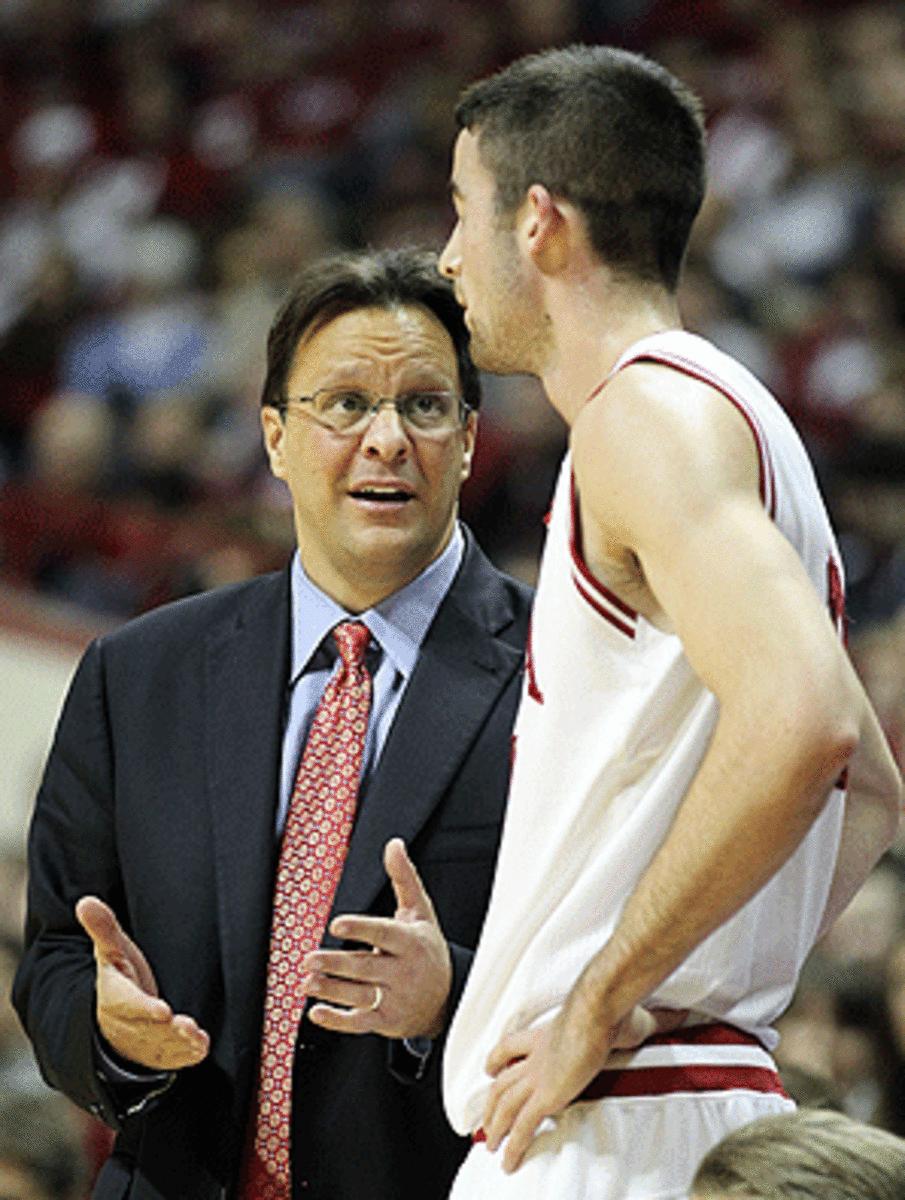SI.com's 2011-12 College Hoops Midseason Coaches Rankings
Picking All-Americas is relatively easy; you just select the best players, who most often come from the best teams. Choosing a coach of the year is more difficult, as one must consider candidates from multiple standpoints -- how good is their team, how much has it exceeded preseason expectations (from polls and statistical projections), and how responsible is the coach for building that team? To ignore the recruiting and talent-evaluation processes that went into assembling contenders would be silly; getting players, in college hoops, is half the battle.
Tom Crean, Indiana. He qualifies for the award on all three levels: He has greatly exceeded expectations; his team is among the national elites, both statistically and in the polls; and he built said team from scratch after inheriting a broken program. Crean has pieced together a Big Ten contender around just one five-star recruit, freshman center Cody Zeller. Unless the Hoosiers experience some significant regression, their coach is going to be hard to knock out of the No. 1 spot.
2. Jim Boeheim, Syracuse. He has led a team without a true All-America candidate to a 18-0 record and No. 1 national ranking. The Orange were expected to be strong this season, but Boeheim has deftly managed the nation's deepest rotation and presided over the sophomore breakouts of Dion Waiters and Fab Melo.
3. John Thompson III, Georgetown. Very little was expected out of the Hoyas after they lost Austin Freeman, Chris Wright and Julian Vaughn, who formed the nucleus of their '10-11 teams. But JTIII has guided them to five quality wins (over Memphis twice, as well as Alabama, Louisville and Marquette) and a No. 11 ranking, and fostered the senior-year breakout of Henry Sims, who could be a first-team All-Big East center.
4. Scott Drew, Baylor. Like Crean, Drew took over a program in tatters and is responsible for building it into a national contender. He addressed the backcourt issues that plagued the Bears last season by adding transfers Pierre Jackson, Brady Heslip and Gary Franklin, all of whom have contributed to a 16-0 start. Drew also assembled one of the country's most talented frontcourts by luring mega-recruits Perry Jones III and Quincy Miller to Waco.
5. Frank Haith, Missouri. While he didn't build these Tigers -- he inherited them from former coach Mike Anderson -- Haith has them playing the best basketball of their careers, as they're off to a 15-1 start. By making Phil Pressey the team's primary point guard, creating good catch-and-shoot opportunities for Marcus Denmon and Kim English, and developing Ricardo Ratliffe's post skills, Haith has turned Mizzou into an offensive juggernaut in his first season at the helm.
Others considered: Rick Majerus, St. Louis; Tony Bennett, Virginia; Steve Prohm, Murray State; Kevin Willard, Seton Hall; Tom Izzo, Michigan State; Frank Martin, Kansas State; Tommy Amaker, Harvard.
1. Tommy Amaker, Harvard. Assembling a nationally ranked team (at least for a few weeks) in the Ivy League is not easy, and Amaker has built what looks like the strongest Ivy League squad of the past decade.
2. Steve Prohm, Murray State. Billy Kennedy's former top assistant inherited a powerful roster, but has led the Racers to a 16-0 start that includes wins over Memphis and Dayton.
3. Greg McDermott, Creighton. He gets some credit for merely having his youngest son, Doug, who's blossomed into a National Player of the Year candidate as a sophomore. But Greg has also built the Bluejays into one of the country's top 10 offensive teams.
4. Danny Hurley, Wagner. Another going 13-17 in his first season, Hurley has the Seahawks on track to reach the NCAA tournament.
5. Ron Hunter, Georgia State. He left IUPUI this offseason to take over a 12-19 team ... and has GSU off to an 11-4 start that projects them to finish in the top four of the CAA.






